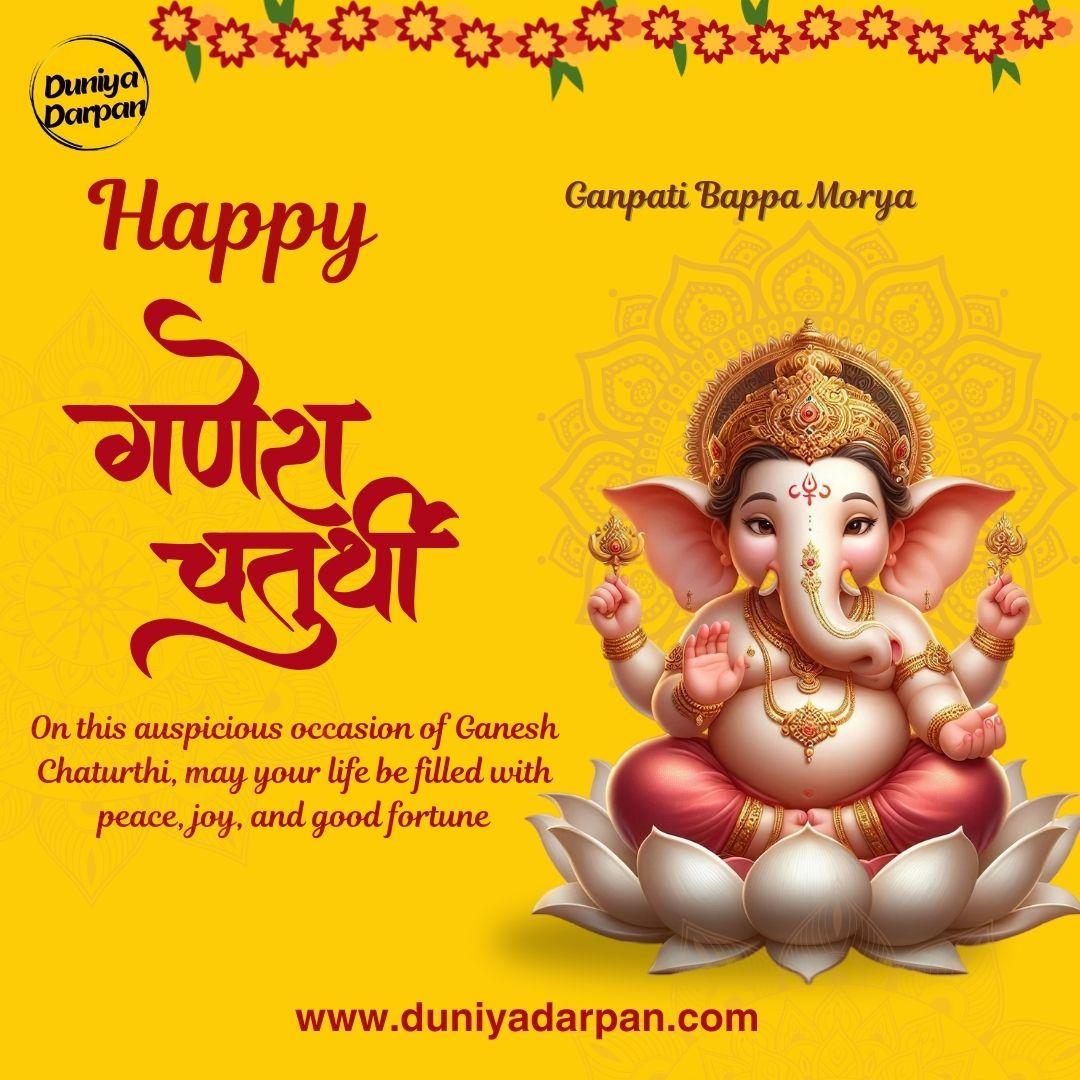Ganesh Chaturthi 2024: Date, Time, and History of the Grand Celebration in India
Ganesh Chaturthi 2024 will be celebrated on Saturday, September 7, with the ten-day Ganesh Utsav culminating in the Visarjan (immersion) on Tuesday, September 17.
Auspicious Choghadiya Muhurat for Ganesha Visarjan:
- Morning Muhurat (Chara, Labha, Amrita): 09:11 AM to 01:47 PM
- Afternoon Muhurat (Shubha): 03:19 PM to 04:51 PM
- Evening Muhurat (Labha): 07:51 PM to 09:19 PM
- Night Muhurat (Shubha, Amrita, Chara): 10:47 PM to 03:12 AM (September 18)
Chaturdashi Tithi:
- Begins: 03:10 PM on September 16, 2024
- Ends: 11:44 AM on September 17, 2024
The celebration of Ganesh Chaturthi can be traced back to the Maratha empire, with its formal introduction attributed to the great Maratha ruler, Chhatrapati Shivaji. Shivaji promoted this festival as a way to unite people and foster a sense of cultural pride. However, the modern-day public celebration of Ganesh Chaturthi was popularized by Lokmanya Tilak in the late 19th century as a means to gather Indians for the cause of independence.
The Legend of Ganesha’s Birth
The most widely accepted story of Lord Ganesha’s origin involves his creation by Goddess Parvati. According to the legend, Parvati used sandalwood paste to mold a boy while Lord Shiva was away. She breathed life into this creation and named him Ganesha, instructing him to guard the entrance while she bathed.
When Lord Shiva returned and found Ganesha blocking his way, unaware of his identity, he grew angry. A fierce battle ensued, and in a moment of rage, Shiva severed Ganesha’s head. Upon learning the truth, Parvati was devastated and transformed into Goddess Kali, threatening to destroy the universe in her grief.
To calm Parvati, Shiva ordered his followers to bring the head of the first living being they encountered. They found a baby elephant, and its head was brought back to Shiva. Shiva then revived Ganesha with the elephant’s head, and the child was bless with eternal life. This act restored peace, and Ganesha was bestow with the position of the foremost deity, worshipped before all other gods during rituals and ceremonies.
The Transformation of Ganesh Chaturthi into a Mass Movement
In the 1890s, Tilak recognized that a public celebration of Ganesh Chaturthi could bridge social and cultural divides. At that time, Indian society was deeply fragment by caste, class, and regionalism, and there were few platforms where Hindus of all backgrounds could come together. The British colonial government further exacerbated these divisions. Inspired by the need for unity, Tilak chose Lord Ganesha, a deity universally revered across caste lines, as the symbol of collective identity. He understood the deep cultural significance of the deity and cleverly used it as a means to gather people and promote national pride.
In 1893, Tilak organized the first public, large-scale Ganesh Chaturthi celebrations in Pune, Maharashtra, transforming the festival into a ten-day event that saw mass participation. He encouraged the setting up of large, elaborate Ganesha idols in public spaces, called sarvajanik (public) Ganeshotsav.Where people from all walks of life could gather, worship, and engage in cultural and intellectual discussions. It was a platform not just for devotion but for the exchange of ideas about independence and Indian identity.
Tilak’s Strategy and the Role of the Festival in the Freedom Struggle
Tilak was a sharp political strategist who recognized the significance of using cultural and religious symbols to fight British oppression. By organizing mass processions, music, plays, and discourses during the festival, he created a forum for people to discuss national issues, British exploitation, and India’s political future. The public nature of these events made it difficult for the British authorities to suppress them, as the gatherings were frame as religious and cultural, not overtly political.
Ganesh Chaturthi, celebrated with immense devotion, marks the birth of Lord Ganesha, revered as the remover of obstacles. And the harbinger of wisdom, prosperity, and good fortune. This festival, also called Vinayak Chaturthi, holds special significance,
especially in Maharashtra, where it is celebrate with grand processions and community gatherings.
Follow us on

